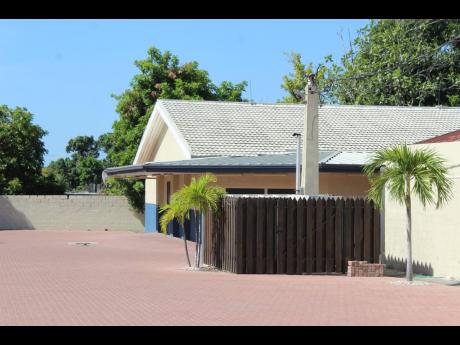Fragmentation in Jamaica
THE BRETHREN Church/Assembly started in 1708 in Schwarzenau, Germany, from where it roots extended to other parts of Europe, including England. Yet, the persecution that the Brethrenfaced was growing and times were economically hard, and in 1719, under the leadership of one Peter Becker, Brethren started to migrate to the USA, where several assemblies were established.
A major split among the Brethren took place in Britain in the late 1840s and the early 1850s. John Nelson Darby, one of the leading dissenters, and a former priest of the Irish Church, was credited for initiating the split. In the 1880s, doctrinal conflicts and leadership power struggles created huge schisms, splintering the Brethren Church into various branches, in the USA.
The Brethren who first came to Jamaica had their roots in Plymouth and Bristol in England, and Dublin in Ireland, thus the name Plymouth Brethren. However, much research has been carried out over the years to determine which Brethren first came to Jamaica and when, as discussed in Part II. One thing that is certain, though, is that the branch of the Plymouth Brethren that came first to Jamaica was the more ‘Exclusive’ or ‘Closed’ assemblies.
“Personal discussions with another leader of the ‘Closed’ assemblies, and later a personal visit to the area, revealed that three of these first assemblies were located to the south-west of Darliston (Dillion-Bigwoods, Bognie, and Cave Valley). The first of these assemblies called ‘Cottage’ is in Bognie, near to Dillion-Bigwoods, on a mountain top about three miles south of Darliston in eastern Westmoreland,” noted religion historian/researcher Lloyd A. Cookewrites in an unpublished document.
He continues, “Another two are in western Westmoreland at Sheffield and at Shrewsbury, close to Roaring River. Another called ‘Three Brothers’ is located at Petersville, three miles in the hills above Whitehouse. The seventh was established on Bond Street, in western Kingston. This was later moved to its present location at 20 Beechwood Avenue, in Kingston.”
Not until about 1920 did the first ‘Open’ Assembly of Brethren arise from among the ‘Exclusives’ in Jamaica, Cooke writes in his book, The Story of the Jamaican Missions. That was the beginning, it seems, of the fragmentation of the Brethren Church in Jamaica.
In an unpublished 206 document, Billy Hall says his personal interview of a George Spearing, whose father was in a Hanover Street meeting in 1912, and with Zadock Daniels, who was a Sunday school student in the newly formed separated meeting of 1920, had been his “best sources”.
“In addition to those sources, I must add my close contact and questioning of American missionary Leonard Bewick, who was the first foreign missionary among the newly formed group of 1920 when he visited in 1923,” Hall writes.
He says, in 1920 when a doctrinal issue that had arisen in England came to Jamaica, some local leaders rejected the new doctrines. The split happened because the Closed and Exclusive Brethren in England attempted to impose upon the Brethren in Jamaica their doctrinal “discovery” that Jesus was not always the Son of God, but became such at His baptism.
“In reaction to that development, some of the leaders and members of the Hanover Street Assembly in Kingston refused to accept the ‘revelation’ and so separated themselves theologically and geographically to form in 1920 what is known today as Assembly Hall, the ‘mother’ of us all … This happening then, might be rightly taken as marking the beginning of ‘Open’ Brethren witness in Jamaica,” Hall writes.
From there the ‘Open Brethren’ evolved into the Christian Brethren Church with many people being given credit for its growth and evolution. Now, according to Cooke, the three branches of Plymouth Brethren active in Jamaica include the original Plymouth Brethren, who have since dwindled to only about two active assemblies/churches, one outside Mandeville, another in Stony Hill, St Andrew.
There are approximately 25 ‘Closed’ assemblies remaining in Jamaica, many of them in Westmoreland and St Elizabeth, with one each in Mandeville, Manchester; Montego Bay, St James; and Kingston. Many use the unofficial moniker, Grace and Truth, on their buildings. Cooke is a member of the third branch, the Christian Brethren’ with their headquarters located Hagley Park Plaza, in St Andrew. And, it is said that contact between the Open and Closed Brethren “remains distant, almost non-existent”.

